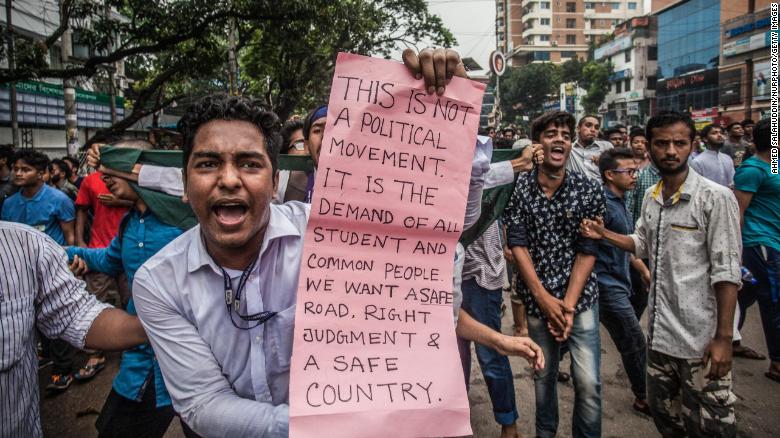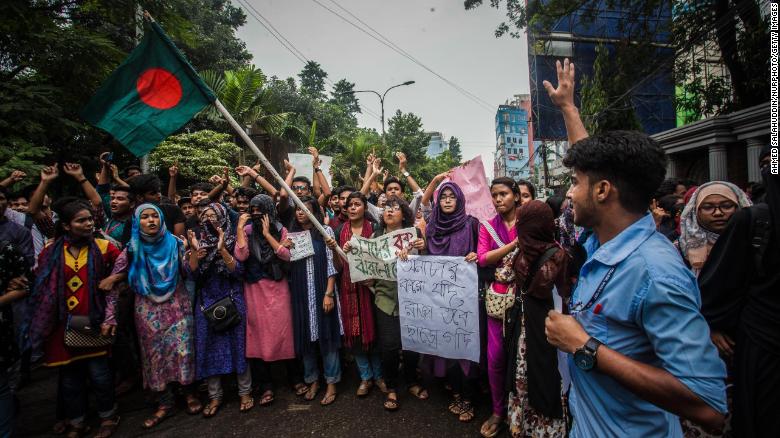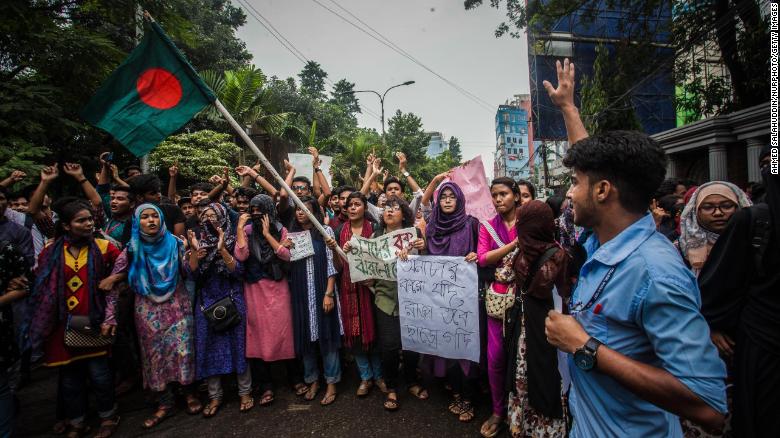Bangladesh protests: How students brought Dhaka to a standstill
Dhaka, Bangladesh (CNN)A tragic traffic accident over a week ago has triggered mass protests by students who have taken to the streets of Bangladesh's capital to demand that authorities improve road safety.
The demonstrations were sparked by the deaths of two students who were reportedly killed by a speeding bus in Dhaka on July 29.
What's behind the protests?
Put simply: Anger over the dangerous conditions on Dhaka's roads. Protests kicked off in the crowded capital after a privately-operated bus ran over a group of students, killing two and injuring several others, eyewitnesses told Bangladesh's state-run news agency, Bangladesh Sangbad Sangstha.
While the circumstances surrounding the accident remain unclear, the news agency reported that the bus driver has since been arrested.
Road collisions in Bangladesh are not uncommon; more than 3,000 people die in road accidents in the country each year, according to data compiled by the World Health Organization.
Despite government warnings to cease demonstrations, student protesters have paralyzed parts of the capital, with teenagers in school uniforms erecting checkpoints and allowing only emergency vehicles to pass.

Bangladesh is exploring a new road safety law following days of protests.
And while they may be at odds with officials, the protesters have won widespread praise for easing Dhaka's congestion and making drivers, even officials, carry driving licenses.
"We are witnessing something unprecedented in the history of our transport and infrastructure: Our roads are starting to function in a proper and efficient manner ... And the credit for this goes to all the students out there protesting," said a Dhaka Tribune editorial.
How has violence unfolded?
The days-long demonstrations took a violent turn last week as authorities beat protesters with batons and shut down mobile internet connections as the unrest spread beyond the capital.
Police used water cannons and tear gas to disperse student protests outside Dhaka University on Monday as crowds attempted to march through the neighborhood of Shahbagh, Maruf Hossain Sardar, a deputy police commissioner, said at the scene.

Bangladeshi students march on Sunday.
In another area of Dhaka known as Aftabnagar, youths who were thought to be supporters of the ruling party clashed with students from a privately-run university.
The youths were "wielding iron rods and logs and tried to drive away agitating students from the street," according to Belal Ahmed, the head of public relations for North South University.
Ahmed added that the clashes spilled out into the road and blocked traffic but the situation had since returned to "normal now and the students left the university."
On Saturday, more than 100 people were injured by police, according to local media reports, while a day later, a vehicle carrying US Ambassador Marcia Bernicat was attacked by "armed men." The diplomat was unhurt.
News Courtesy: www.cnn.com











